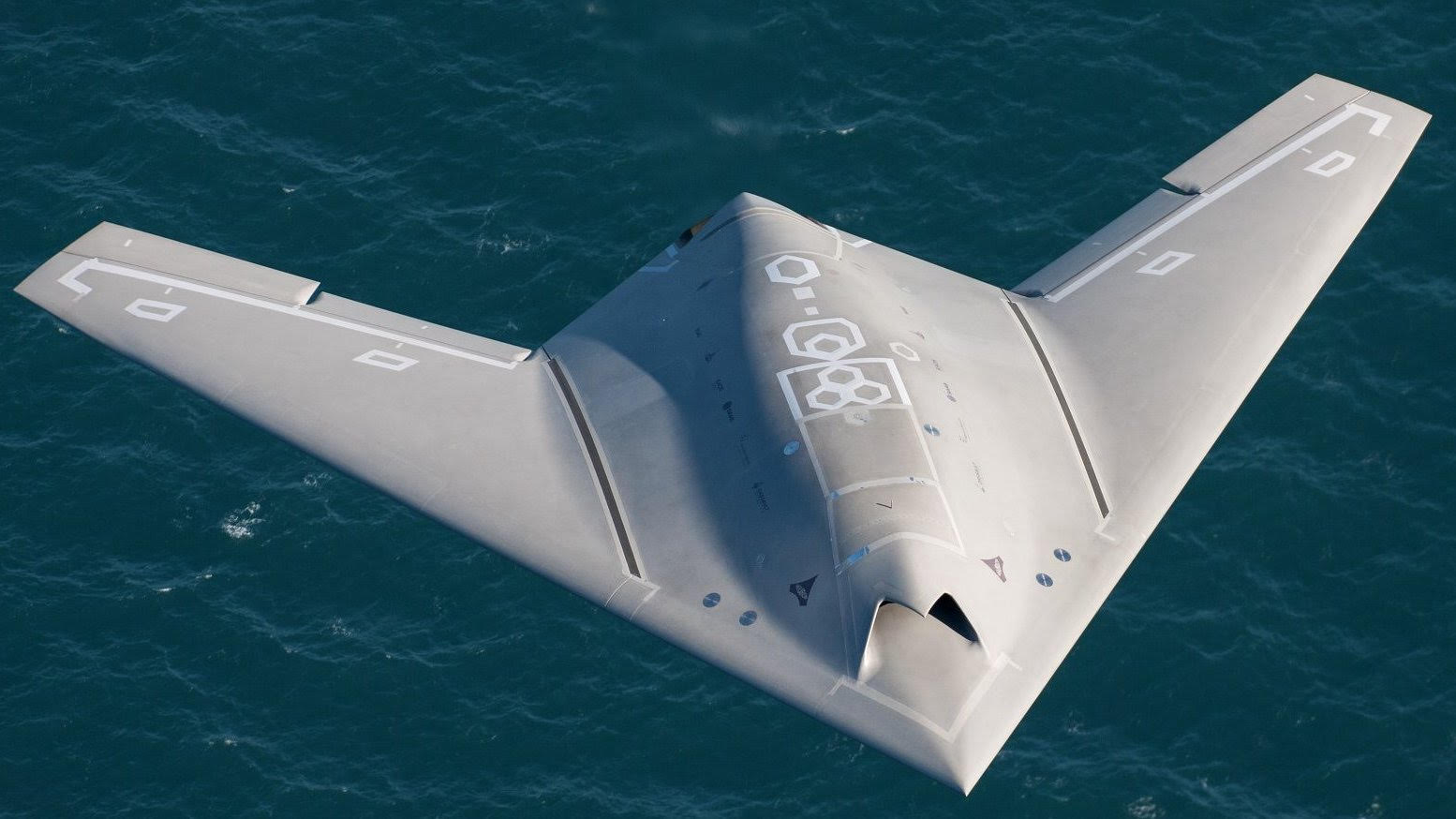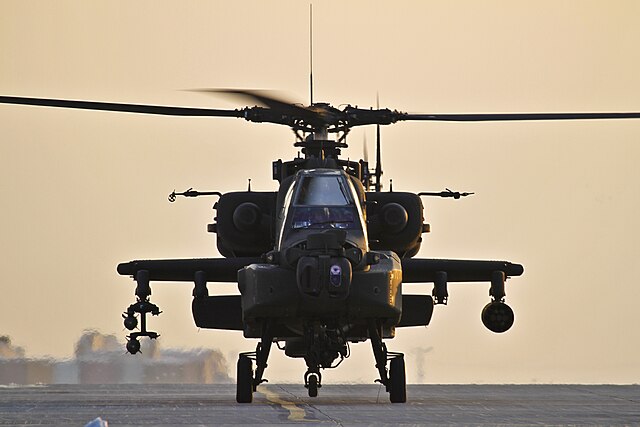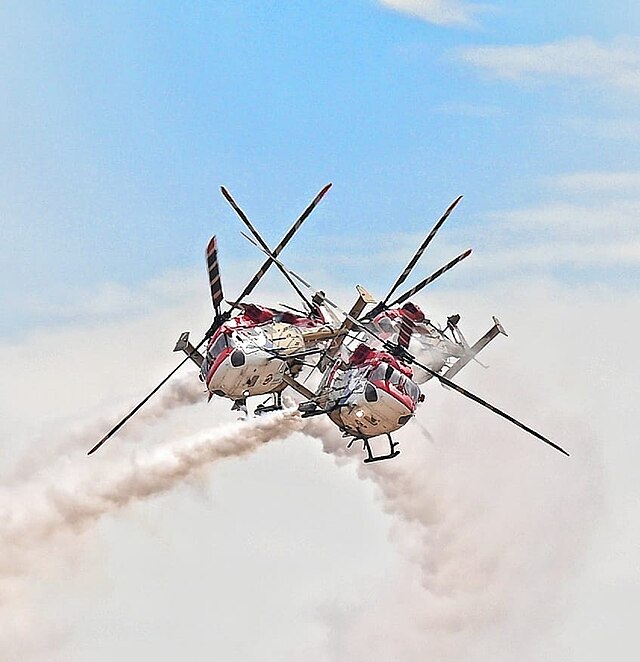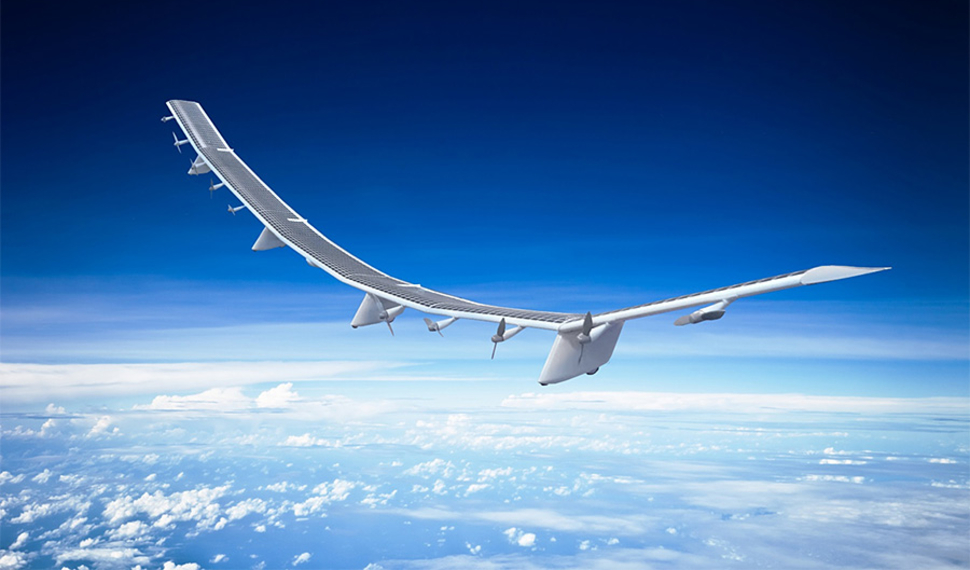
The Future is Autonomous
Sat, 24 Apr 2021 | Reading Time: 9 minutes

Image Source: SPANSEN
The Future is Autonomous
Videos of the Israeli-made Harop loitering munitions, reportedly used by Azerbaijan during last year’s war with neighbouring Armenia, in the disputed Nagorno-Karabakh region, give some idea of their pinpoint destruction capability, and the psychological effect, indicate how autonomous aerial weapons are changing the future of warfare. The drones automatically follow a flight path and chose the optimum climb and dive path for the final attack. Earlier in September 2019, drones were used to attack the Saudi Aramco oil processing facilities at Abqaiq and Khurais. USA extensively used drone strikes against targets as part of the ‘War on Terror’. The American success in Iraq and Afghanistan, and earlier Israeli success in the regional wars resulted in China, Iran, Italy, India, Pakistan, Russia and Turkey acquiring or aspiring for similar capability. An unmanned combat aerial vehicle (UCAV), also known as a combat drone is basically a normal UAV that also carries ordnance such as missiles/bombs. These drones are usually under real-time human control, with varying levels of autonomy. The UCAV’s attack targets using ‘stand-off’ weaponry, greatly depersonalizing the decision to attack and considerably reduced casualties among the attackers, raising ethical questions. The advent of Artificial Intelligence (AI) resulted in greater flight and decision making autonomy, and UAV operations free of human involvement/interference. Such UAVs possibly react more quickly and without bias, but lack human sensibility. But airborne Lethal Autonomous Robots (LARs) under a cyber-attack could go haywire and have operational and ethical implications.
Autonomous Drone as a Concept
The concept of “autonomous drones” is that it can act based on their own choice of options or ‘system initiative’ and “full autonomy”. Such drones are programmed with a large number of alternative responses to the different challenges they may meet in performing their mission. One of the greatest challenges for the development and approval of aircraft with such technology is that it is extremely difficult to develop satisfactory validation systems, which would ensure that the technology is safe and acts like humans. At another level, autonomy could mean ‘artificial intelligence’ systems that learn and even self-develop possible courses of action.
Initial Combat Employment
In the 1973 Yom Kippur war, Israel used unarmed US Ryan Firebee target-drones to spur Egypt into firing its entire arsenal of anti-aircraft missiles. Later Israel developed the lighter Scout and the Pioneer UAVs and soon became a lead manufacturer of UAVs for real-time surveillance, electronic warfare (EW), and decoys. In the 1982 Lebanon war, extensive UAV based EW resulted in no Israeli pilot being downed. The first ‘UAV war’ was the first Gulf war (May 1991) when at least one UAV was airborne at all times during operation ‘Desert Storm’. The first human ‘kill’ by an American UAV was on October 7, 2001 in Kandahar.
Swarms and Loyal Wingman
On-board sensors allow UCAVs to sense their surroundings and react accordingly, harnessing data in real time to make informed, intelligent decisions based on pre-set criteria. “Swarms of drones” (drones which follow and take tasks from other drones) are entirely dependent on autonomous processing. Autonomous drones that operate with manned aircraft, as unmanned “Loyal Wingman” aircraft have all been tested. Further development of UCAVs being launched from manned aircraft, to work independently or in extension of the “mother aircraft”. Autonomous flying drones clearly bring new opportunities for military forces. Manned aircraft could be at the centre of a local combat or intelligence system extended with drones serving many supportive roles such as jamming, weapons-delivery, or as multi-sensor platforms.
Artificial Intelligence Key to UAS Autonomy
An AI arms race has been on for last four-five years. USA is clear that rapid advances in AI will define the next generation of warfare. The global private investment in AI is around $70 billion in 2019. AI is a key growth investment area for US DoD, with nearly $1 billion allocated in the 2020 budget. Budget for AI supported systems is much greater. Russia has been working on AI-guided missiles that can decide to switch targets mid-flight. China is fast catching up with and plans to overtake the United States in AI. Beijing’s roadmap aims to create a $150 billion AI industry by 2030. Beijing has committed $2 billion to an AI development park. Annual private Chinese investment in AI is around US$ 7 billion a year. The Chinese are filing many more AI patents than did Americans. It is predicted China will be the leading country in AI by 2025.
Major Chinese Autonomous UAS
While USA and Israel remain world leaders in developing high technology UCAVs and Autonomous platforms, China leads in small hand held UAVs used by hobbyists. It has of late, made significant R&D investments in military autonomous platforms. The GJ-1 and GJ-2 are MALE UAVs capable of the strike role and are the domestic in-service variants of the original export oriented Wing Loong I and Wing Loong II systems. GJ-1 and GJ-2 are considered to be the PLA’s equivalents of MQ-1 and MQ-9, respectively. The High Altitude Long Endurance (HALE) drone “Soaring Dragon” were seen in Tibet during the Doklam standoff with India in 2017. The GJ-11 stealthy UCAV and WZ-8 supersonic reconnaissance UAV have also been unveiled. A carrier-borne derivative of GJ-11 is under development. GJ-11 will also support development for concepts such as autonomous mission execution, autonomous swarming, manned-unmanned-teaming (MUMT)/loyal wingman, as well as more dispersed and redundant sensor/shooter concepts. Chinese UCAV WZ-2000, is the combat version of the Xianglong high altitude long endurance UAV. They are also developing a stealth strike UCAV called the ‘Warrior Eagle’ with forward swept wings, similar niche to U.S. X-45. The Divine Eagle AEW UAV would be a high-end AEW UAV platform. The “Anjian” (or “Dark Sword”) UCAV is a delta winged, canard equipped concept may have MUMT and air-to-air UCAV technologies.
Western Systems
The future of aerial combat is here with the U.S. military’s successful test flight of one of six Boeing converted unmanned F-16s. The United States says the drones will be used to create the most realistic ‘dog-fighting’ pilot training exercises. BAE Taranis was a British technology demonstrator UCAV program. It was part of the UK’s Strategic Unmanned Air Vehicle Experimental program (SUAVE) with fully integrated autonomous systems and low observable features. It had maximum take-off weight of about 8000 kilograms and two internal weapon bays, making it one of the world’s larger UAVs. The first-flight took place in August 2013. With the inclusion of ‘full autonomy’, the intention was for the platform to ‘think for itself’ for a large part of the mission. Taranis has now been merged into the proposed Anglo-French Future Combat Air System, where Taranis will be combined with the French Dassault nEUROn in a joint European UCAV. A test flight of a demonstrator is expected around 2025 and entry into service around 2040. It was designated New Generation Fighter. Spain joined the program in June 2019.
UCAS-D and Northrop Grumman X-47B are the US Navy (USN) successors to the US Air Force (USAF) and USN joint J-UCAS, which was cancelled in 2006. Boeing is also working on the X-45N a concept demonstrator for a next generation of completely autonomous military aircraft. The UCAS-D program is to demonstrate the feasibility of operating an unmanned vehicle on an aircraft carrier. Technology and operational procedures gained from the program and X-47B demonstrator will be used to develop an operational unmanned carrier aircraft as part of the Unmanned Carrier-Launched Surveillance and Strike (UCLASS) program. Northrop Grumman intends to develop the X-47B into an operational aircraft, the MQ-25 Stingray, which will enter service in the 2020s. The USAF has shifted its UCAV program from medium-range tactical strike aircraft to long-range strategic bombers. The technology of the Long Range Strike program is based on the Lockheed Martin Polecat demonstrator.
The MQ-25 Stingray unmanned carrier aviation air system (UCAAS) formerly the Carrier-Based Aerial-Refuelling System (CBARS), is a UCAV that has emerged from the UCLASS program. In February 2016, after many delays and doubts about whether the UCLASS would specialize in strike or ISR roles, it was decided to produce a Super Hornet sized, carrier-based aerial refuelling tanker with some ISR and some communications relay capabilities. The strike variant will evolve later. Three of these UCAVs could fly with an F-35 for refuelling and sensor operations. The MQ-25 could extend the Super Hornet’s combat radius. The competitors are Lockheed Martin’s Sea Ghost, Boeing’s ‘unnamed’ (based on Phantom Ray), and General Atomics’ Sea Avenger.
Other Major Systems
The Elbit Systems Hermes 450 is an Israeli medium size multi-payload UCAV designed for tactical long endurance missions, with over 20 hour endurance. Hermes 450 is equipped with two Hellfire missiles or other newer missiles. The Mikoyan SKAT is one of the Russian low-observable, subsonic tail-less, UCAV with maximum take-off weight of ten tons. It is meant to carry weapons in two ventral weapons bays large enough for missiles such as the Kh-31. It is powered by a single Kilmov RD-5000B turbofan engine, a variant of the RD-93. Indian DRDO’s “Ghatak” is an autonomous stealthy, flying-wing design UCAV, being developed for Indian Air Force (IAF). It will be capable of releasing missiles, bombs and other PGMs. The program is still in the project definition stage.
AI Enables Drone Swarming
UAV Swarming or swarm intelligence has become feasible to design with machines exhibiting complex behaviour, achieving mutual coordination and accomplish complex tasks. Aerial robots can ascend synchronously, communicate with each other in mid-air and create cross-references. Fixed formation group flights and complex group manoeuvres are possible.
The swarm of drones behaves and functions somewhat like swarms occurring in nature, e.g., honeybee swarms, flying in coordination, displaying collective intelligence and each executing a small share of the collective task. Very small Drones – some weighing less than five pounds – can cause devastating effect if they are armed with weapons, and flown in a swarm of large numbers. Drone swarms can be both remotely operated or fly autonomously, or may accompany ground vehicles and other aircraft. Even single getting through could be potentially lethal. Because of their size, these drones are difficult to see, hard to catch on radar, and hard to shoot at with conventional weapons, particularly in swarms. Many countries, including India have displayed drone swarming. US Air Force carried out trials with 103 Perdix quad copter drones functioning as a swarm. The trial included airdropping of these drones in the battlefield from canisters carried by three F/A-18 fighter aircraft, gathering the drones in a swarm and then proceeding to engage targets in the battlefield. Drone swarms are now being conceptualized as canister launched weapons, especially the quad-copter ones, which would make them easy to pack and carry. These could be airdropped through fighter or transport aircraft, or through bigger drones, over or close to target, depending on the danger level in the airspace in the target zone.
Cost Advantage Small Autonomous Drones
Big drones like the ‘Predator’ are expensive, slow, and vulnerable to being targeted, have to be flown singly, and cannot be of much use against an advanced adversary. In contrast, small drones, could be assembled into non-standard models and used to attack targets clandestinely. Since such models are cheap, they could be made in the hundreds or thousands without much of a cost burden. Electronics like GPS, digital cameras, laser range finders, RF data communication sets, processors, batteries, engines, motors and even pressure transducers and altitude sensors are low-priced enough to be used to produce advanced capability cheap drone models for military missions including armed ones.
Drone/Swarm Counters Options
Drone swarms have some weaknesses and limitations too. First and foremost, their offensive could be blunted through the use of countermeasures like electronic warfare techniques, cyber-attacks, laser and microwave weapon systems, small arms fire, camouflage and concealment or pitching a counter drone swarm. In January 2018, Russia confirmed a swarm drone attack on its military base in Syria. Six of these small-size UAVs were reportedly intercepted and taken under control by the Russian EW units. USA is now deploying new radars like Q-53 system that can detect and identify such small objects and then initiate the kill chain using laser weapons. The laser weapon system can fire over and over, essentially creating an unlimited magazine of bullets. Laser beams are visible and can accurately aim, target and destroy the threat at the speed of light. Cyber solutions to defeat drones are by using multi spectral sensor systems to detect and then using cyber electromagnetic to either disable the drone or physically take over and divert. Lockheed Martin has already supplied the US Army with a 60-kilowatt laser mounted on a large modified truck that can destroy rockets, artillery, missiles, drones, and other trucks or ground vehicles. It combines multiple fibre lasers to generate the high power weapon parallel beams. These can also be integrated onto aircraft, ground vehicles and ships.
Ethical and Legal Issues
Autonomous drones, when they are used during armed conflict, would be subject to the general principles and rules of the Law of Armed Conflict. In this respect autonomous drones are not to be distinguished from any other weapon system. The question is for how long may an autonomous weapons system (lawfully) be ‘left alone’ to operate (for hours or days)? The delegation of life-and-death decisions to non-human agents is being questioned by those who oppose autonomous weapons systems. As with any ‘means of warfare’, autonomous drones must only be directed at lawful targets (military objectives and combatants) and attacks must not be expected to cause excessive collateral damage.
Get Act Right – India
The first combat capable version of the Pakistani Burraq UCAV was first publicly demonstrated in March 2015. Autonomous unmanned systems is where the future is. In view of small defence expenditures and the persisting duplications of military capacities, mixed manned and unmanned air formations might be opportunity for future conflicts. Intensive weapon research is going on for AI based autonomous weapon systems. That is where the future is.
India is part of the most threatened regions of the world and needs to watch weapon developments closely. With very few players in the market, technologies are closely guarded. No one parts with them. India has to make a serious beginning to develop AI based weapon systems and platforms to stem excessive technological gap. DRDO and HAL already have many programs including the MUMT displayed along with LCA by HAL during Aero India. Despite 30 plus years of work by DRDO on many systems, very few have been inducted by Indian Armed forces. India continues to acquire UAV/ACAVs from Israel. India is soon likely to sign a $ 3 billion contract to acquire 30 Predator class UAVs from General Atomics of USA. DRDOs theoretical research needs to be converted into formidable deliverable end-products if India is to achieve its aspirations of a global player. TAPAS-BH-201 (Rustom-2), and Ghatak must succeed quickly. Indian government and IAF have been encouraging Indian drone start-ups. IAF held the Mehar Baba Prize competition for participants to build a swarm of 50 drones to lead Humanitarian Aid and Disaster Relief (HADR) operations. We believe that the orders would get placed soon on the winners. There are nearly a dozen Indian private sector start-ups. Companies like IdeaForge, India’s largest manufacturer of drones for defence, homeland security, and industrial applications, are licensed manufacturer of UAVs approved by the Ministry of Defence (MoD). They have deployed over 700 systems including with the Indian Army, Navy, Air-Force, all CAPFs, and many more. Government needs to allot adequate funds and position dynamic result-oriented professional managers on autonomous system projects.
Author

Air Marshal Anil Chopra, PVSM, AVSM, VM, VSM (Retd) is a pioneer of the Mirage 2000 fleet. He commanded two operational bases and the IAF’s Flight Test Centre ASTE. He is a former member of AFT Lucknow.
Disclaimer
The opinions expressed in this article are the author’s own and do not reflect the views of Chanakya Forum. All information provided in this article including timeliness, completeness, accuracy, suitability or validity of information referenced therein, is the sole responsibility of the author. www.chanakyaforum.com does not assume any responsibility for the same.
Chanakya Forum is now on . Click here to join our channel (@ChanakyaForum) and stay updated with the latest headlines and articles.
Important
We work round the clock to bring you the finest articles and updates from around the world. There is a team that works tirelessly to ensure that you have a seamless reading experience. But all this costs money. Please support us so that we keep doing what we do best. Happy Reading
Support Us




















POST COMMENTS (0)